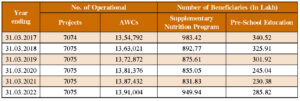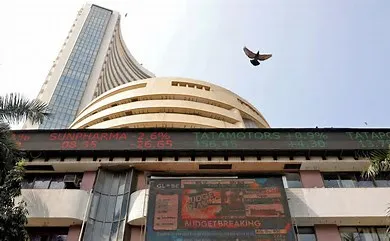Children, often touted as the future of a nation, play an instrumental role in shaping a country’s progress and development. Given this universally acknowledged tenet, ensuring their well-being becomes paramount for any country’s overarching developmental goals. For India, this notion holds special significance. With a burgeoning young population, children in India represent not just the future, but also a significant human resource capital.
According to the 2011 Census, a staggering 158 million children fall within the 0-6 age bracket, underscoring the sheer magnitude of this demographic segment. The Ministry of Women and Child Development (MWCD) has thus been entrusted with the formidable task of overseeing various schemes aimed at the holistic development, protection, and welfare of children in the country.
The Emergence of “Saksham Anganwadi and Poshan 2.0”
Understanding the need for a comprehensive and strategic approach, the Government of India recently greenlighted the “Saksham Anganwadi and Poshan 2.0” initiative. This program marks a significant shift, emphasising the cultivation of health, wellness, and resilience against malnutrition. The earlier initiatives, such as the Anganwadi Services, Scheme for Adolescent Girls, and Poshan Abhiyan, have been recalibrated and integrated under this new umbrella, maximising potential nutritional outcomes.
To streamline the efforts, the program is categorised into three primary verticals:
1. Nutritional Support: This focuses both on Poshan and Adolescent Girls, ensuring they receive appropriate nourishment.
2. Early Childhood Care and Education: Catering to children aged 3-6 years, this vertical seeks to provide them with a robust foundation for future learning and development.
3. Anganwadi Infrastructure Enhancement: Under the banner of Saksham Anganwadi & Poshan 2.0, this focuses on developing robust, modern infrastructure conducive to child development.
Deciphering the Anganwadi Services
Among these initiatives, the Anganwadi Services stands out as one of the most iconic programs initiated by the Government of India. It epitomises the country’s unwavering commitment to its young generation and nursing mothers. The dual objectives of this program are to provide preschool, non-formal education and to break the chains of malnutrition, morbidity, and mortality that have plagued several regions of the country. It primarily targets children (6 months to 6 years), pregnant women, and lactating mothers.
The overarching goals of Anganwadi Services are multifaceted:
– Enhance the nutritional and health standards of children aged between 6 months and 6 years.
– Establish a solid foundation for their psychological, physical, and social development.
– Curtail the rates of mortality, morbidity, malnutrition, and school dropouts.
– Foster a sense of coordination among different departments to ensure child development.
– Educate and empower mothers to cater to the health and nutritional needs of their children.
To achieve these goals, the Anganwadi Services has provisioned a set of six services:
1. Supplementary Nutrition: Aims to provide an additional source of nourishment.
2. Pre-school Non-formal Education: Prepares children for formal schooling.
3. Nutrition & Health Education: Educates parents about health and nutrition.
4. Immunisation: Vaccinates children against common diseases.
5. Health Check-up: Periodic health examinations of children.
6. Referral Services: In cases of severe malnutrition or illness, children are referred to higher health facilities.
The journey of Anganwadi Services began in 1975 with a modest 33 projects and 4,891 centres. Over time, by leveraging increased governmental support and a targeted approach, the program expanded its reach.
As of June 2022, a robust network of 7,074 projects and approximately 1.39 million operational centres stands testimony to its success.
Furthermore, beneficiaries of the Supplementary Nutrition Program numbered around 951.35 million, inclusive of pregnant women and lactating mothers.
A noteworthy development was the revision of cost norms for supplementary nutrition in October 2017. This ensured more funds per beneficiary, providing greater support to the targeted demographic.
Responding to the COVID-19 Challenge
The COVID-19 pandemic brought unforeseen challenges. However, the Anganwadi Services, under the directive of MWCD, pivoted swiftly. Instead of traditional centre-based operations, Anganwadi workers switched to a door-to-door approach, ensuring that the provision of take-home rations to beneficiaries remained uninterrupted.
During this tumultuous period, Anganwadi workers and helpers played a commendable role. They not only ensured the distribution of nutritional supplements but were also actively involved in community surveillance, awareness campaigns, and other COVID-19 related tasks.
Conclusion
India’s commitment to child development, as evidenced by its multi-pronged initiatives like the Saksham Anganwadi and Poshan 2.0 and the Anganwadi Services, is commendable.
As India marches towards its vision of a New India by 2030, these robust measures to nurture its young population will indubitably lay a solid foundation for a prosperous and vibrant nation. While challenges persist, with concerted efforts and unwavering commitment, India is poised to create a brighter future for its children and, in turn, for the nation.
















